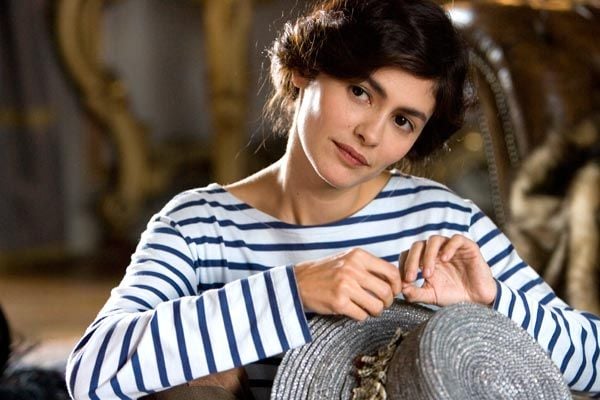Byatt is a stout lady with a refined English accent of the sort that people don't seem to have anymore (she is 73 years old, so I suppose that makes sense). The conversation last night was about 75 minutes long, including questions from the audience. Here are some of the moments that stuck with me.
- Byatt has a reputation as a very cerebral writer, so I found it fascinating to learn that when she writes, she imagines how it would feel in her own body to experience what the characters are feeling or doing. (She said that this can make writing sex scenes a very weird experience--needing to imagine herself in the bodies of both partners!)
- Even though she is an acclaimed and prolific novelist, Byatt says that she still has a hard time thinking of herself, or describing herself, as "a writer." Instead, she says, she thinks of her career in terms of "there's work to be done, something that needs to be said, a new chapter that needs to be written." I am beginning to think that Byatt might have the right idea--that it might be healthier to say "I write plays" instead of "I am a playwright." Putting the emphasis on the work, not on your own ego and identity. (And an active verb like "I write" is always stronger than the verb "to be.")
- Byatt thoroughly outlines every novel, then sits down and writes it straight through--not jumping around from point to point in the structure. She talked about how the novels of the Frederica Potter Quartet were hard to write because their plotting was motivated solely by the characters' psychology; so it was a relief for her to take a break from the Quartet to write Possession, which is a detective story, much more rigorously plotted. I can't remember whether she considers the plot of The Children's Book more like Possession or more like the Quartet, however.
- Byatt tries hard to find something that she likes in every character that she writes--considering them from every angle and trying to see how their flaws could also be construed as virtues, as she put it. I think this is one of the reasons I love the Frederica Potter quartet so much--because she centered four novels around a character that some writers might consider too unlikable to be a heroine.
- Byatt next wants to write a novel about the Surrealists--she has some images or ideas in mind, but no characters yet. She notes that the major Surrealists "seem to have all been quite disagreeable people" so that will pose a challenge, since she doesn't want to write a satire about pretentious artists, but a real humane novel.
- Anyone who has read some Byatt knows that she loves metaphor--and that's why she loves fairy tales, too, because of their archetypal qualities. Fairy tales ("the Germanic, Grimm kind") play a role in The Children's Book as they do in some of her other novels. And like Possession, The Children's Book also contains poems written by Byatt in the voice of some of her characters; she was not originally going to do this until a young man who was writing a thesis on Possession ("a ferocious Pole," she described him) challenged her to incorporate World War One poetry into the new novel. When she realized that the metaphors of the First World War poets fit into the scheme of metaphors that she had already built up, she had no choice but to write some poems in that style and include them in the novel.
- Byatt also loves imagery and seems to have a very visual imagination. She described how she vividly pictures scenes as she writes them, e.g., getting a very clear image of a man sunbathing among brussels sprouts in a garden, wearing nothing but a wristwatch.
- But then, because she is a perfectionist, she has to make sure that these images are "accurate." That is, she realized that the man couldn't be surrounded by brussels sprouts, because they grow when the weather is too cold for sunbathing; and she also realized that she needed to Google "wristwatch" to find out whether a man in the Edwardian period would wear one. As it turns out, he wouldn't, so that had to go, too.
- Another tool that Byatt used while writing The Children's Book was an Excel spreadsheet that kept track of how old every one of her characters was supposed to be in every year from 1895 to 1919. "Because I had to make sure that all the characters aged at the same pace as everyone else, you see," she explained. However, she also admitted that she made a calculation error on the spreadsheet and didn't realize it until after the novel went to press--meaning that one of the characters in The Children's Book doesn't age the way he or she is supposed to. Byatt refused to say anything more about the matter, so I'll have to look out for this mistake when I read the novel!












